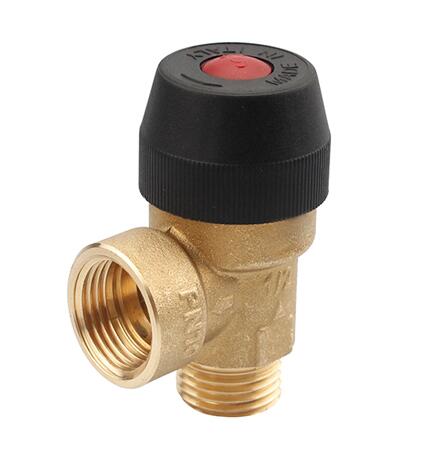Description
 What Is A Safety Relief Valve?
What Is A Safety Relief Valve?
 A safety relief valve controls the water pressure that comes into the home . It provides safety protection in the system. When the system’s pressure exceeds the set value, the safety valve is opened to relief the pressure, so that the system pressure can be controlled under safety range. The high water pressure may cause many plumbing problems like leakages, pipe bursting ect, so keeping the water pressure under a safe lever is very important and necessary.
A safety relief valve controls the water pressure that comes into the home . It provides safety protection in the system. When the system’s pressure exceeds the set value, the safety valve is opened to relief the pressure, so that the system pressure can be controlled under safety range. The high water pressure may cause many plumbing problems like leakages, pipe bursting ect, so keeping the water pressure under a safe lever is very important and necessary.
When the water system is protected by a water pressure reducing valve, there will be less stress through the inner plumbing appliances. Such as faucets, shutoff valves,water heaters will be less likely to leak, and fluctuations in water pressure are balanced.
 How Does A Safety Relief Valve Work?
How Does A Safety Relief Valve Work?
In most cases, a pressure relief valve consists of three parts: a diaphragm/ball, spring-loaded mechanism, and a connection. The orifice is closed using diaphragm or ball by a spring-loaded mechanism, which is placed in the valve’s housing.
For adjustable pressure relief valves, the spring-loaded mechanism can be adjusted which directly alters the pressure on the spring mechanism. Increasing the pressure on the spring directly increases the set pressure limit, which is the point at which the valve starts to open and vice versa for decreasing the pressure on the spring. If there is no adjustability, a relief valve set-pressure is specified by the manufacturer.
Once the set pressure is reached, the pressure overcomes the spring pressure and pushes the diaphragm/ball back opening the orifice and releasing the excess pressure. Depending on the media, it is either discharged to the atmosphere (i.e. compressed air) or back to a tank or pumping circuit (hydraulics).
 Product Feature
Product Feature
>> Manual & automatic operation can be available
>> Jap imported SS304 stainless steel spring in good resilience, 100000 times lifetime
>> High precision machining make high precison sealing and pressure relief
>> Professional designed pressure testing equipment to make valve’s quality stable and reliable










Reviews
There are no reviews yet.